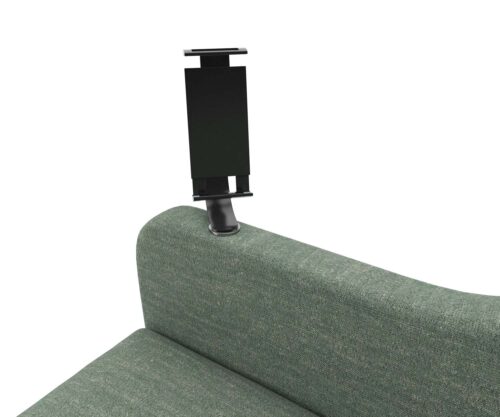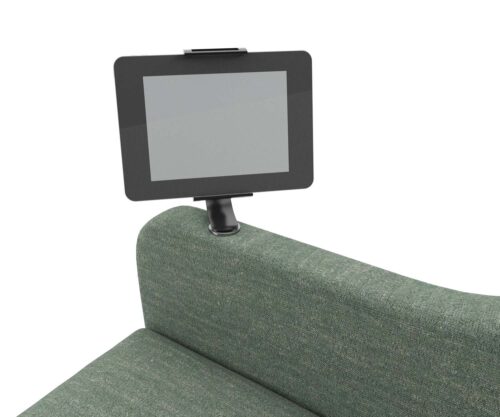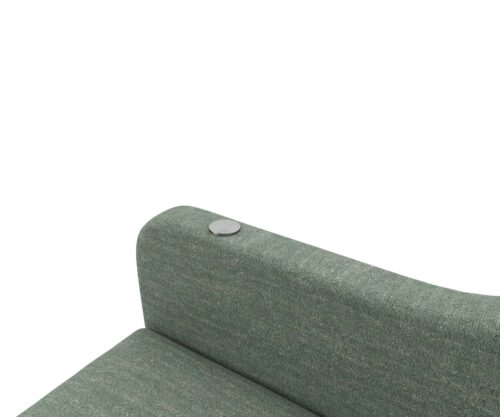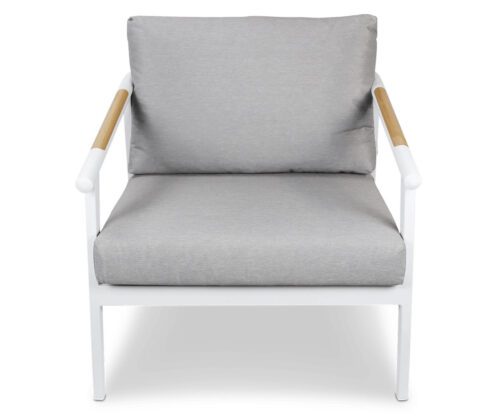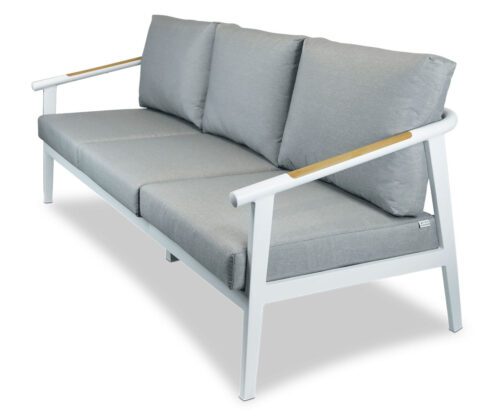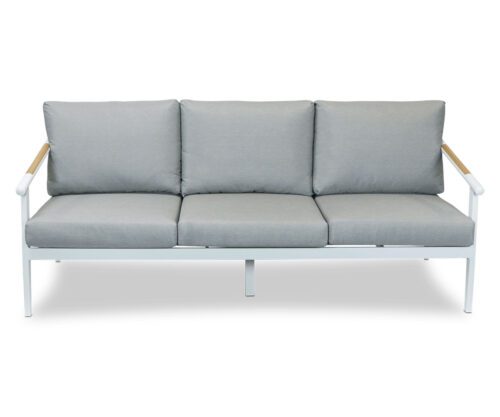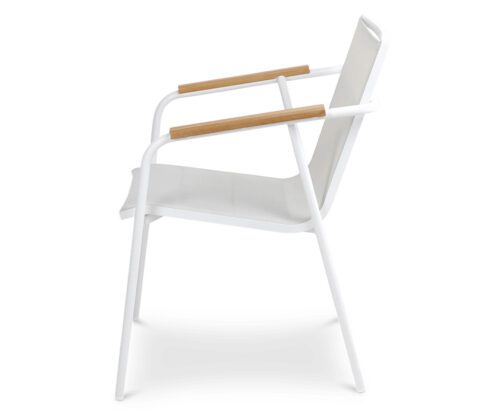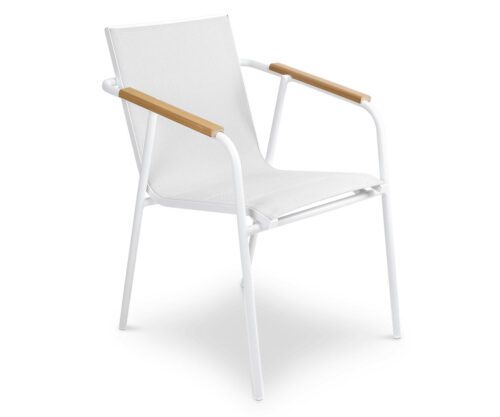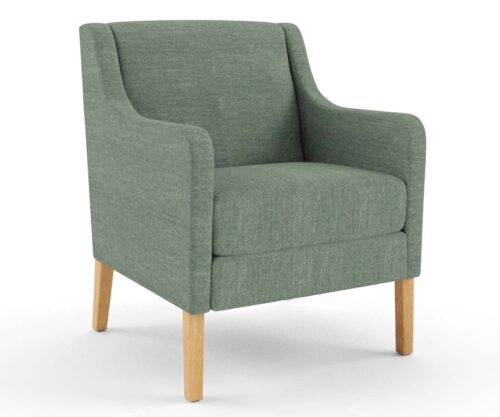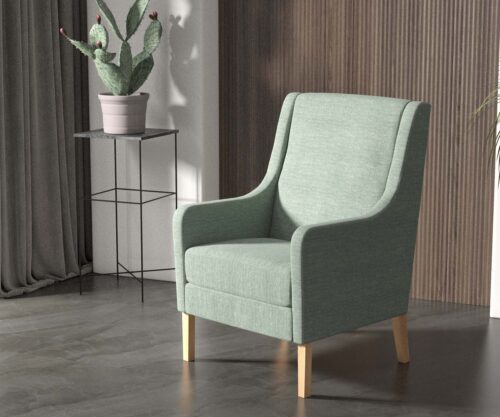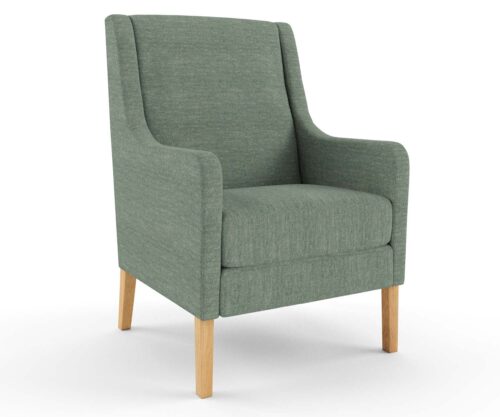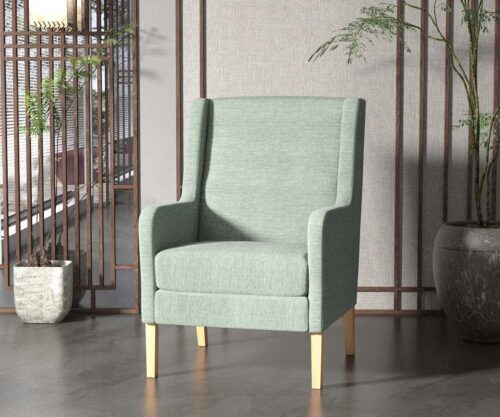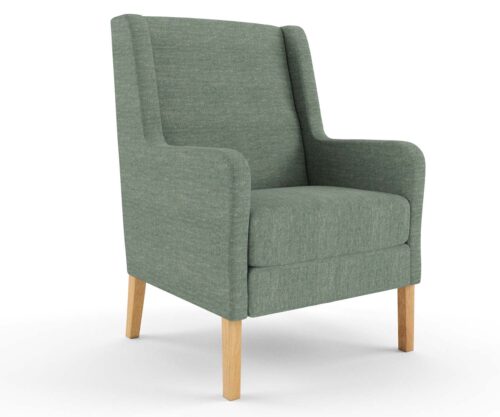Inclusive Spaces: The Art of Applying Universal Design to University Student Furniture Procurement

Universities are increasingly recognizing the importance of creating spaces that cater to diverse student needs. Applying universal design principles to furniture procurement is not just about meeting accessibility standards; it’s about crafting an environment that fosters inclusivity, comfort, and empowerment for all.
In this article, we explore how universal design transforms university furniture procurement.
The Essence of Universal Design: Beyond Compliance
Universal design is a philosophy that strives to make spaces and products usable by people of all abilities, backgrounds, and preferences. When applied to furniture procurement for university students, this philosophy challenges us to move beyond mere compliance with accessibility guidelines and embrace a holistic approach that considers the diverse needs and experiences of every individual.
At its core, universal design is about shaping spaces for everyone, moving beyond minimum standards to create environments that are intuitive and integral to the overall design ethos. It embraces a user-centered approach, actively involving stakeholders to ensure that spaces resonate with those who use them.
This philosophy fosters creativity and innovation, breaking free from traditional approaches to enhance functionality and aesthetic appeal. It’s a sustainable and future-forward approach, positioning campuses to adapt to the evolving needs of the university community.
In essence, universal design is an invitation to transform campuses into spaces that mirror the richness and diversity of the individuals who call them home, forging a path toward a universally enriching and empowering university experience.
Navigating the Landscape of Inclusivity
1. Engaging Stakeholders
Start the procurement process by engaging with students, faculty, and staff to gather insights into the diverse needs and preferences within the university community.
Why Stakeholder Engagement Matters
- Diverse Perspectives: Students offer insights into daily experiences, while faculty and staff align furniture choices with educational goals. Accessibility experts guide adherence to standards, and facilities management provides logistical insights.
- How to Engage Stakeholders: Surveys and Feedback Forms: Gather insights on challenges and preferences. Focus Groups: Facilitate open discussions to explore specific needs. Town Hall Meetings: Encourage dialogue on a broader scale. Collaborative Workshops: Actively involve stakeholders in the design process.
Benefits of Stakeholder Engagement
- Informed Decision-Making: Stakeholder input informs decisions, ensuring alignment with end-users’ needs.
- Enhanced Buy-In: Involvement creates a sense of ownership and support for the chosen solutions.
- Preventing Overlooked Issues: Diverse perspectives help proactively address potential challenges.
2. Inclusive Design Workshops
Conduct design workshops involving individuals with different abilities and perspectives to gain valuable input for selecting furniture that caters to a wide range of users.
Key Components
- Diverse Engagement: Participants with varied abilities and backgrounds contribute diverse perspectives, enriching the workshop’s insights.
- Facilitated Discussions: Skilled facilitators guide discussions on challenges, aspirations, and specific requirements for inclusive furniture.
- Experiential Activities: Hands-on activities foster empathy and understanding of diverse needs.
- Accessibility Demonstrations: Demonstrations showcase assistive technologies, illustrating their impact on usability.
- Collaborative Visioning: Participants collaboratively envision ideal spaces, discussing layouts, functionality, and ambiance.
- Feedback Sessions: Iterative feedback ensures designs align with expressed needs, fostering user-centered solutions.
Benefits
- User-Centered Design: Spaces resonate with the needs and aspirations of the university community.
- Awareness and Sensitivity: Participants gain heightened awareness and sensitivity to diverse challenges.
- Collaborative Decision-Making: Inclusive decision-making fosters ownership and commitment to ongoing inclusive design.
- Comprehensive Problem Solving: Workshops incubate innovative solutions, addressing challenges beyond traditional design processes.
3. Accessibility Audits
Perform accessibility audits of existing spaces to identify areas for improvement and incorporate those findings into the procurement strategy.
Defining the Accessibility Audit
An Accessibility Audit involves a comprehensive evaluation of physical infrastructure, furniture, signage, sensory elements, and technology integration. It goes beyond standards compliance, seeking to understand the nuanced experiences of individuals with diverse abilities.
Importance of Accessibility Audits
- Informed Decision-Making: Guides procurement decisions based on a detailed understanding of current accessibility.
- Identification of Barriers: Proactively addresses issues that might impede inclusivity.
- User-Centric Approach: Incorporates user experiences and perspectives directly into decision-making.
- Legal Compliance: Ensures alignment with accessibility standards and legal requirements.
Executing an Accessibility Audit
- Preparation: Define scope, assemble a diverse team, and identify specific areas for examination.
- Site Visits: Thoroughly document physical features, furniture arrangements, and potential obstacles.
- User Feedback: Gather insights from individuals with diverse abilities.
- Analysis and Reporting: Identify strengths, weaknesses, and areas for improvement, creating a detailed report.
- Implementation: Collaborate to implement recommended changes, integrating accessibility improvements into future planning and procurement processes.
Strategies for Universal Design in Furniture Procurement
- Collaborative Spaces: Choose furniture that facilitates collaboration, with flexible seating arrangements and adaptable layouts to accommodate group activities and discussions.
- Adjustable Furniture: Opt for desks, chairs, and tables that are adjustable in height to cater to users with varying mobility requirements.
- Comfortable Seating: Prioritize ergonomically designed seating options that provide comfort and support for extended periods of use, promoting a conducive learning and working environment.
- Multifunctional Solutions: Embrace multifunctional furniture that serves diverse purposes, allowing spaces to transform based on the needs of different users and activities.
- Inclusive Material Choices: Consider furniture with materials that are comfortable, durable, and inclusive, taking into account sensory sensitivities and cultural diversity.
- Integrated Technology: Integrate accessible technology solutions into furniture design, ensuring that all students can easily engage with digital resources.
Looking Forward: The Impact of Universal Design on Campus Life
As universities continue to evolve into more inclusive and welcoming spaces, the impact of universal design on campus life is profound. From fostering a sense of belonging to enhancing academic success, the application of these principles creates a positive ripple effect throughout the entire university community.
In Closing: Designing Spaces for All
In the quest for creating environments that transcend physical and cognitive barriers, applying universal design principles to furniture procurement is a crucial step. It’s not just about selecting chairs and desks; it’s about designing spaces that empower every student to thrive. As universities embrace this transformative approach, they pave the way for a future where inclusivity is not just a goal but a fundamental aspect of the educational experience. After all, the design choices we make today shape the learning environments of tomorrow.
Australian Made Student Accommodation Furniture
Our Australian-made student accommodation furniture is designed to meet the unique demands of student living while embodying the essence of durability, safety, and contemporary style.
More News
Inclusive Spaces: The Art of Applying Universal Design to University Student Furniture Procurement

Universities are increasingly recognizing the importance of creating spaces that cater to diverse student needs. Applying universal design principles to furniture procurement is not just about meeting accessibility standards; it’s about crafting an environment that fosters inclusivity, comfort, and empowerment for all.
In this article, we explore how universal design transforms university furniture procurement.
The Essence of Universal Design: Beyond Compliance
Universal design is a philosophy that strives to make spaces and products usable by people of all abilities, backgrounds, and preferences. When applied to furniture procurement for university students, this philosophy challenges us to move beyond mere compliance with accessibility guidelines and embrace a holistic approach that considers the diverse needs and experiences of every individual.
At its core, universal design is about shaping spaces for everyone, moving beyond minimum standards to create environments that are intuitive and integral to the overall design ethos. It embraces a user-centered approach, actively involving stakeholders to ensure that spaces resonate with those who use them.
This philosophy fosters creativity and innovation, breaking free from traditional approaches to enhance functionality and aesthetic appeal. It’s a sustainable and future-forward approach, positioning campuses to adapt to the evolving needs of the university community.
In essence, universal design is an invitation to transform campuses into spaces that mirror the richness and diversity of the individuals who call them home, forging a path toward a universally enriching and empowering university experience.
Navigating the Landscape of Inclusivity
1. Engaging Stakeholders
Start the procurement process by engaging with students, faculty, and staff to gather insights into the diverse needs and preferences within the university community.
Why Stakeholder Engagement Matters
- Diverse Perspectives: Students offer insights into daily experiences, while faculty and staff align furniture choices with educational goals. Accessibility experts guide adherence to standards, and facilities management provides logistical insights.
- How to Engage Stakeholders: Surveys and Feedback Forms: Gather insights on challenges and preferences. Focus Groups: Facilitate open discussions to explore specific needs. Town Hall Meetings: Encourage dialogue on a broader scale. Collaborative Workshops: Actively involve stakeholders in the design process.
Benefits of Stakeholder Engagement
- Informed Decision-Making: Stakeholder input informs decisions, ensuring alignment with end-users’ needs.
- Enhanced Buy-In: Involvement creates a sense of ownership and support for the chosen solutions.
- Preventing Overlooked Issues: Diverse perspectives help proactively address potential challenges.
2. Inclusive Design Workshops
Conduct design workshops involving individuals with different abilities and perspectives to gain valuable input for selecting furniture that caters to a wide range of users.
Key Components
- Diverse Engagement: Participants with varied abilities and backgrounds contribute diverse perspectives, enriching the workshop’s insights.
- Facilitated Discussions: Skilled facilitators guide discussions on challenges, aspirations, and specific requirements for inclusive furniture.
- Experiential Activities: Hands-on activities foster empathy and understanding of diverse needs.
- Accessibility Demonstrations: Demonstrations showcase assistive technologies, illustrating their impact on usability.
- Collaborative Visioning: Participants collaboratively envision ideal spaces, discussing layouts, functionality, and ambiance.
- Feedback Sessions: Iterative feedback ensures designs align with expressed needs, fostering user-centered solutions.
Benefits
- User-Centered Design: Spaces resonate with the needs and aspirations of the university community.
- Awareness and Sensitivity: Participants gain heightened awareness and sensitivity to diverse challenges.
- Collaborative Decision-Making: Inclusive decision-making fosters ownership and commitment to ongoing inclusive design.
- Comprehensive Problem Solving: Workshops incubate innovative solutions, addressing challenges beyond traditional design processes.
3. Accessibility Audits
Perform accessibility audits of existing spaces to identify areas for improvement and incorporate those findings into the procurement strategy.
Defining the Accessibility Audit
An Accessibility Audit involves a comprehensive evaluation of physical infrastructure, furniture, signage, sensory elements, and technology integration. It goes beyond standards compliance, seeking to understand the nuanced experiences of individuals with diverse abilities.
Importance of Accessibility Audits
- Informed Decision-Making: Guides procurement decisions based on a detailed understanding of current accessibility.
- Identification of Barriers: Proactively addresses issues that might impede inclusivity.
- User-Centric Approach: Incorporates user experiences and perspectives directly into decision-making.
- Legal Compliance: Ensures alignment with accessibility standards and legal requirements.
Executing an Accessibility Audit
- Preparation: Define scope, assemble a diverse team, and identify specific areas for examination.
- Site Visits: Thoroughly document physical features, furniture arrangements, and potential obstacles.
- User Feedback: Gather insights from individuals with diverse abilities.
- Analysis and Reporting: Identify strengths, weaknesses, and areas for improvement, creating a detailed report.
- Implementation: Collaborate to implement recommended changes, integrating accessibility improvements into future planning and procurement processes.
Strategies for Universal Design in Furniture Procurement
- Collaborative Spaces: Choose furniture that facilitates collaboration, with flexible seating arrangements and adaptable layouts to accommodate group activities and discussions.
- Adjustable Furniture: Opt for desks, chairs, and tables that are adjustable in height to cater to users with varying mobility requirements.
- Comfortable Seating: Prioritize ergonomically designed seating options that provide comfort and support for extended periods of use, promoting a conducive learning and working environment.
- Multifunctional Solutions: Embrace multifunctional furniture that serves diverse purposes, allowing spaces to transform based on the needs of different users and activities.
- Inclusive Material Choices: Consider furniture with materials that are comfortable, durable, and inclusive, taking into account sensory sensitivities and cultural diversity.
- Integrated Technology: Integrate accessible technology solutions into furniture design, ensuring that all students can easily engage with digital resources.
Looking Forward: The Impact of Universal Design on Campus Life
As universities continue to evolve into more inclusive and welcoming spaces, the impact of universal design on campus life is profound. From fostering a sense of belonging to enhancing academic success, the application of these principles creates a positive ripple effect throughout the entire university community.
In Closing: Designing Spaces for All
In the quest for creating environments that transcend physical and cognitive barriers, applying universal design principles to furniture procurement is a crucial step. It’s not just about selecting chairs and desks; it’s about designing spaces that empower every student to thrive. As universities embrace this transformative approach, they pave the way for a future where inclusivity is not just a goal but a fundamental aspect of the educational experience. After all, the design choices we make today shape the learning environments of tomorrow.
Australian Made Student Accommodation Furniture
Our Australian-made student accommodation furniture is designed to meet the unique demands of student living while embodying the essence of durability, safety, and contemporary style.
Commercial furniture by room
Based in Brisbane, we’re an Australian manufacturer of aged care furniture, retirement living furniture, hospital & healthcare furniture, hotel & accommodation furniture and student accommodation furniture. We also supply a range of commercial office furniture.
Discover the FHG Look Book: Your Source of Inspiration for Quality Australian-Made Commercial Furniture
- Quality Craftsmanship: See why we’ve been a trusted partner for over 25 years.
- Local Excellence: Learn how our Brisbane team ensures the highest standards.
- Inspiration and Ideas: Find innovative furniture solutions for any environment.
Don’t miss the opportunity to transform your commercial space with FHG’s expertly crafted furniture. Download the FHG Look Book today and start your journey towards exceptional design and quality.

